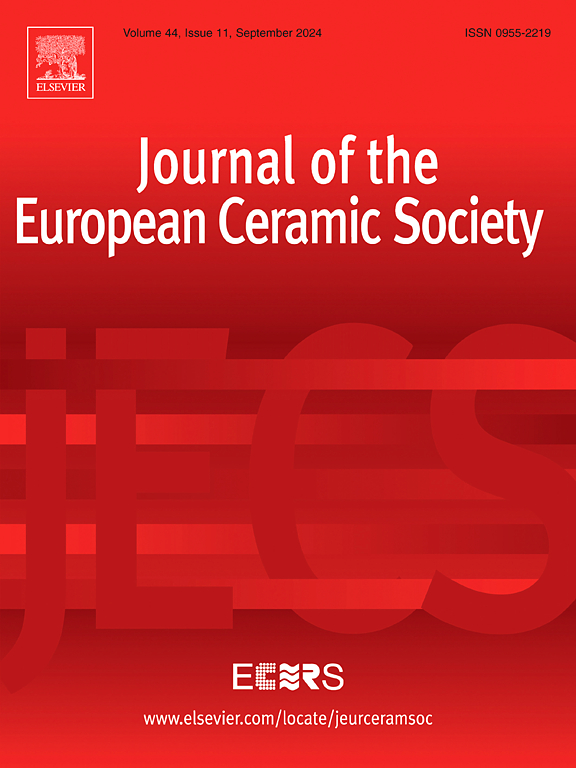Stress modulated Pb-cation displacement to strengthen polarization switching in PbZrO3 antiferroelectric films for energy storage
IF 5.8
2区 材料科学
Q1 MATERIALS SCIENCE, CERAMICS
Journal of The European Ceramic Society
Pub Date : 2025-03-25
DOI:10.1016/j.jeurceramsoc.2025.117400
引用次数: 0
Abstract
Antiferroelectric films are promising electrical/thermal switch candidates due to their fast polarization switching characteristics. However, the internal mechanism of stress-modulated polarization switching in antiferroelectric films from the atomic scale is not fully understood, which limits their energy/information storage. Herein, the relationship between residual stress-induced Pb-cation displacement and polarization switching in antiferroelectric PbZrO3 (PZO) films is comprehensively investigated. It is found that compressive stress relaxes, mobility of Pb-cation enhances, and double hysteresis loop characteristics gradually become obvious as thickness increases. The polarization switching of PZO films with high compressive stress slightly changes under external temperature- and frequency-field stimulus indicating its strong phase transition stability. For the leakage mechanism, a space charge-limited current (SCLC) for 2-layer (75-nm) and 4-layer (170-nm) PZO transforms into mixed multiple effect for other PZO films at low electric field, and the Fowler-Nordheim tunneling (FN) dominates all PZO films with further increasing electric field. This work builds a close correlation between stress-modulated Pb-cation displacement and polarization switching in PZO films and advance the research of designing new antiferroelectric materials to achieve high energy storage capability.
求助全文
约1分钟内获得全文
求助全文
来源期刊

Journal of The European Ceramic Society
工程技术-材料科学:硅酸盐
CiteScore
10.70
自引率
12.30%
发文量
863
审稿时长
35 days
期刊介绍:
The Journal of the European Ceramic Society publishes the results of original research and reviews relating to ceramic materials. Papers of either an experimental or theoretical character will be welcomed on a fully international basis. The emphasis is on novel generic science concerning the relationships between processing, microstructure and properties of polycrystalline ceramics consolidated at high temperature. Papers may relate to any of the conventional categories of ceramic: structural, functional, traditional or composite. The central objective is to sustain a high standard of research quality by means of appropriate reviewing procedures.
 求助内容:
求助内容: 应助结果提醒方式:
应助结果提醒方式:


